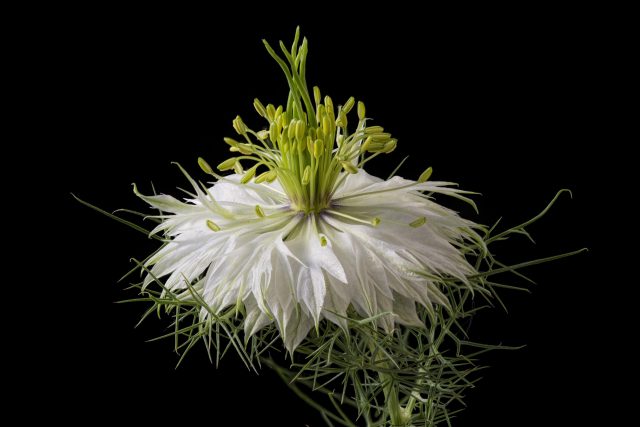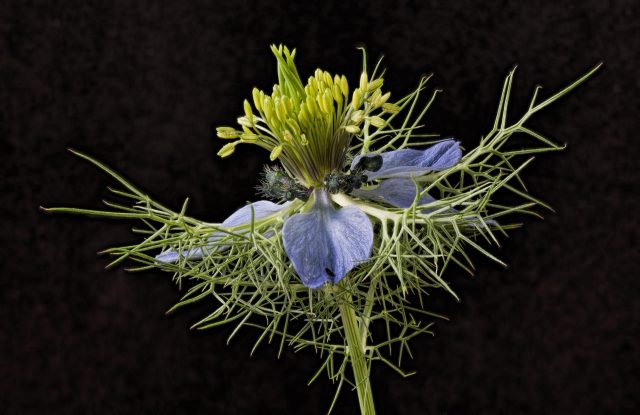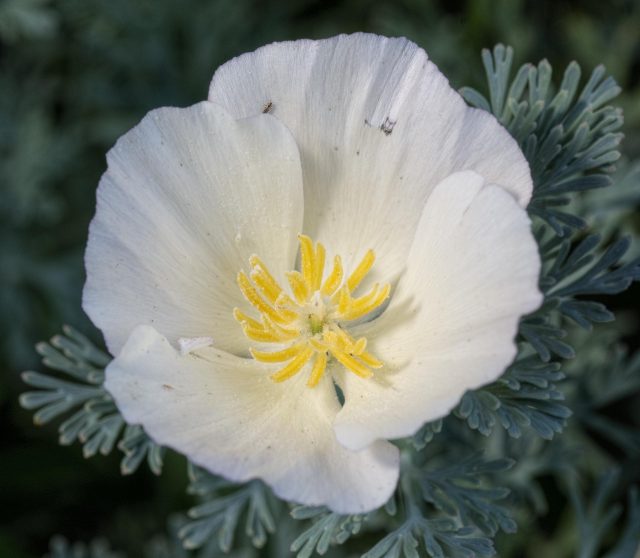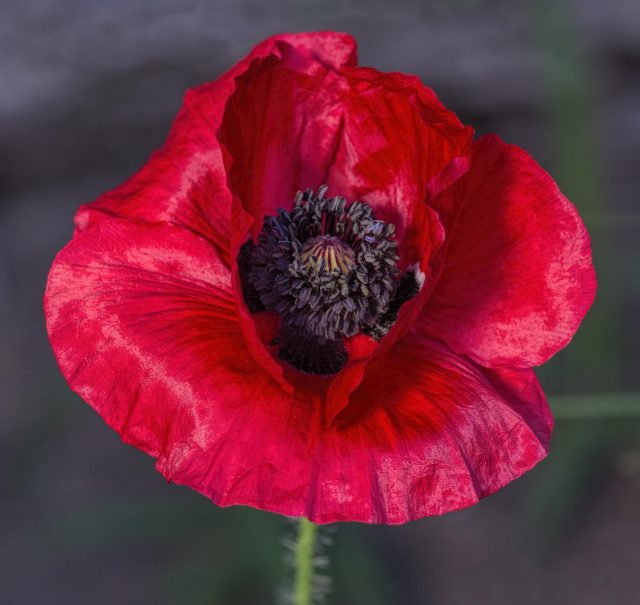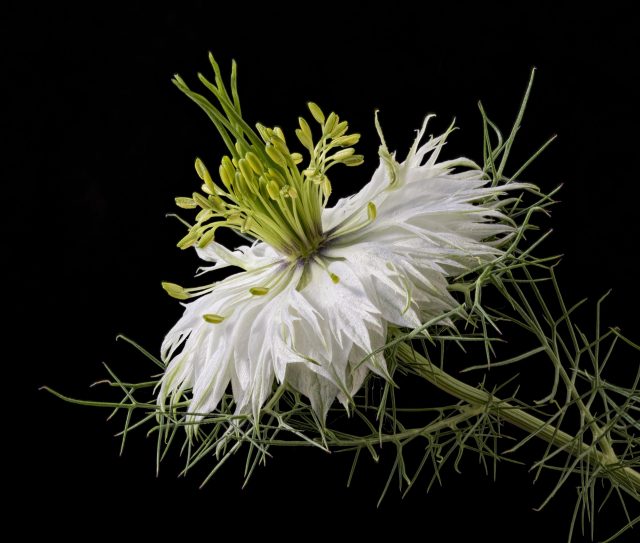
In the field, stacked focus close-up photography is iffy. Sometimes you get good results, but usually there’s too much wind, the light is constantly changing, or it’s impossible to control the lens with sufficient accuracy to get a workable stack of a botanical subject.
It’s much easier to do indoors, where there is no wind, you can control the light and background, and you have a focusing rail handy. The picture of the very three-dimensional Nigella damascena above was assembled in Helicon Focus from 110 separate f/11 images and has a total depth of field of roughly three inches — not bad for a macro. (Click the image to see it larger; right-click and open in a new window to see it at full size.)
If 110 slices at f/11 sounds excessive, you’re right. Here’s another picture of the same flower composed from a stack of 31 images:
Here’s another nigella picture, composed from 104 images. See if you can identify the petals.
Stacked focus is a specialized technique often effective with complex subjects, but simpler methods generally work quite well. Here are a couple of single-shot pictures of poppies.

